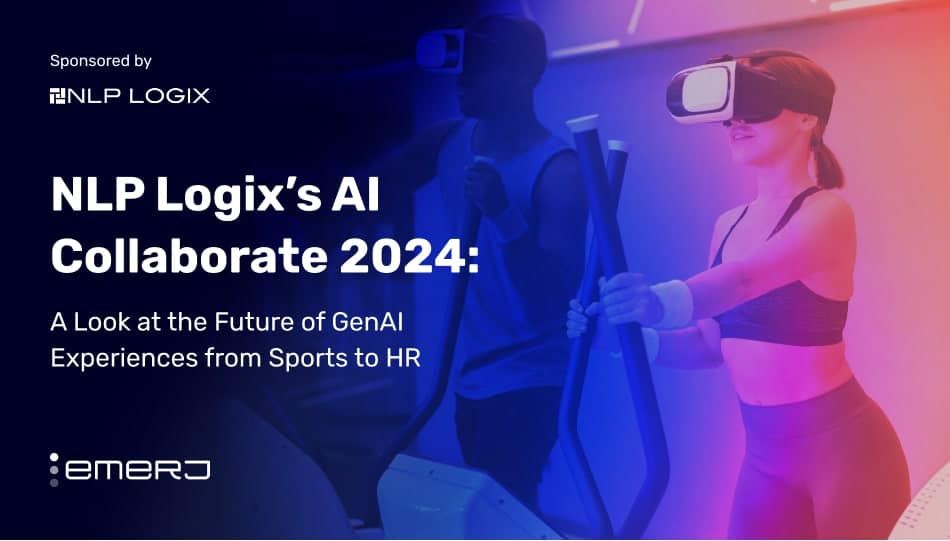In 2020, we wrote about the early but fertile stage of AI development at Johnson and Johnson. Since then, the COVID-19 pandemic and improvements to machine learning have forced important changes in how J&J is using artificial intelligence.
The company’s growing presence in 170 countries and an aggressive schedule for AI integration have prompted us to write this updated article.
Johnson & Johnson (J&J) is a multinational corporation specializing in pharmaceuticals, biotechnology research, and medical technologies. In 2023, J&J reported a revenue of $85.16 billion and a profit of $13.33 billion. Although it is unknown how much J&J invests in AI research and assimilation, we found ample evidence of its applications.
In this article, we focus on two key use cases of data-driven AI models at Johnson & Johnson:
- Responding to supply chain disruptions: Leveraging machine learning that predicts supply and demand fluctuations to respond to real-time disruptions and ensure that healthcare products are delivered efficiently.
- Improving surgical outcomes with operation room analysis: Enhancing surgical precision and reducing critical decision-making time by analyzing live data analytics in the operating room.
Responding to Supply Chains Disruptions
In recent years, J&J faced notable supply chain disruptions due to extreme weather events, financial disruptions, and the Covid-19 pandemic. Managing thousands of healthcare products and 250 subsidiaries—paralleled with pandemic demand for products like Tylenol doubling—made it difficult for J&J managers to locate the impact of supply chain disruptions.
At the onset of COVID-19, the company found itself falling short of soaring consumer demand and struggled to prioritize locations where products are needed most, according to an article by J&J’s Chief Medical Officer Joanne Waldstreicher.
J&J’s partner Databricks reports that the company previously relied on 35+ fragmented data systems with disparate priorities and unique configurations for supply chain management. The lack of integration consumed a large labor effort for extracting and analyzing each dataset manually, limiting the speed and scalability of insights.
As a result, J&J’s pre-pandemic supply chain needed more real-time global data and flexible analytics, making it difficult to respond to changing market conditions. To respond to these challenges, Johnson and Johnson partnered with Databricks and DAS42 and developed a machine learning-driven solution that integrates its varied supply chain data sources.
The partnership with DataBricks helped bring the fragmented sources into a single view, using a lakehouse approach that transmits all data through DataBricks’ Delta Lake Storage. According to Databricks, creating this common layer drove a 45-50% drop in data engineering workload costs and lowered data delivery lag from 24 hours to under 10 minutes.
Screenshot from DataBricks (Source: Databricks.com)
We found evidence of several data inputs that the platform included:
- Supplier performance data from manufacturing plants and distribution facilities
- GPS-powered track and trace capabilities monitoring where a shipment is at any given moment
- Hospital data—inventory levels and consumption patterns—to prevent unnecessary stockpiling and assess supply risks
With the data fully harmonized and accessible, DataBricks’s case study report tells us the company’s SQL is then fed through optimized connectors to machine learning applications for real-time supply chain forecasting. The move marked a shift from J&J’s tediously manual supply chain analytics to more responsive automated supply chain analytics.
According to the vendor’s use case documentation, DAS42 worked with J&J to consolidate their four existing applications into one application that generates a live analytical report, including inventory levels, distribution obstacles, and other metrics.
The output from this vital function is supply chain forecasts — flagging any supply deviations or disruptions — that anticipate future shipment requirements. DAS42 found that the consolidated system streamlined supply chain decision-making and minimized the need for staff training.
Machine learning algorithms also analyze the historical data of consumer demand fluctuations to locate patterns and ultimately produce demand projections. In its Depuy Synthes manufacturing facility, J&J increased productivity by 15% by advancing the prediction of consumer demand, according to a J&J press release. Trimming off delivery time has fueled more efficient hospitals and better-met consumer expectations since orders can now be delivered the day they are placed.
Beyond consumer products, J&J’s Advance Case Management (ACM) is also improving the distribution of surgical products. Utilizing AI and image-based algorithms, it can predict the most likely product range required for surgeons to do joint-replacement surgeries.
Jean Nycz, J&J’s head of Supply Chain Consumer Solutions, reports in a company press release that they can predict the size of implants with a 90%+ accuracy level, adding that algorithms led to a 60% reduction in instrument and sterilization costs.
After automating its supply chain, Johnson & Johnson was ranked 4th in Gartner’s global supply chain list. The company continues to set the standard for how machine learning can strengthen supply chain agility and, in turn, contribute to healthcare advancement.
Improving Surgical Outcomes with Operation Room Analysis
Johnson and Johnson products are in 80% of the world’s operating rooms (OR) and help improve surgical outcomes. However, two key issues continue to occupy ORs:
- Surgeon’s lack of visibility and real-time information hinders their ability to make informed decisions
- Turnover time between different procedures in operation rooms remains too long
Surgeons traditionally rely on basic imagery monitoring and their own training to make decisions, but these still leave significant gaps in ORs. Surgeons lack real-time data analysis that can alert them of complications and predictive operating capabilities that can precisely detect abnormalities such as tumors.
To fill these gaps, J&J’s MedTech team is developing AI-driven live analytics to help physicians navigate the diagnosis and surgical process. Every second matters in the operating room (OR), and real-world footage with continuous algorithmic learning can reduce the critical time for decision-making.
“A collection of AI models could act like driver-assistance technology for surgeons, amplifying their ability to deliver care while reducing cognitive load,” said Shan Jegatheeswaran, Vice President of MedTech at J&J.
In March 2024, MedTech announced a collaboration with NVIDIA to accelerate AI use in surgery. Jegatheeswaran finds that the significant challenge of scaling AI in surgery is the closed design of surgical technologies. NVIDIA’s IGX edge computing platform provides J&J with the infrastructure to integrate AI applications openly into the operating room. Its advanced edge computing capabilities enable:
- Localized data processing within the OR
- Real-time analysis of live and stored surgical data
- Reduced need for sensitive data transfer
- Ultra-low latency performance—critical for surgical procedures
We found evidence of three ways that J&J’s MedTech division is integrating AI into the operating room.
MedTech’s VELYS Enabling Technology Platform provides real-time insights to improve knee replacement outcomes. According to NVIDIA’s press releases announcing the use case, the technology equips surgeons with crucial real-time data needed to protect soft tissue, predict joint stability, and restore knee function. The new algorithm-driven approach improves surgeon visibility, decreasing the likelihood of costly complications.
The J&J MedTech’s Monarch™ Platform is also driving decisions about whether surgery is necessary. Monarch™ improves bronchoscopy diagnostic yield by 15%—and eventually lung cancer diagnoses—by letting physicians examine lung areas that are difficult to access with conventional bronchoscopes, per a J&J results report. During lung biopsy, AI and machine learning algorithms guide the bronchoscope and enable more precise detection of potential tumors, giving J&J an edge in its clinical accuracy.
Below is a depiction of how machine learning can be integrated to reduce OR turnover time:
Screenshot from the report “A Machine Learning Approach to Predicting Case Duration for Robot-Assisted Surgery” from the Journal of Medical Systems (Source: Researchgate.net)
J&J’s new algorithm, which speeds up the diagnosis of blood pressure in the lungs, recently received a “breakthrough device” designation from the FDA. While it previously took 2 or more years to identify, the device cuts diagnosis time for pulmonary hypertension by 12-18 months. The scientists did it by presenting an algorithm with electrocardiogram readings—measuring the heart’s electrical signals—and training it to spot patterns that were present in patients later diagnosed with the life-threatening disease.
Broadly, these technologies are poised to:
- Promote earlier intervention: fostering more timely treatment, delaying disease progression, and improving patient satisfaction
- Reduce costs for hospitals: minimizing surgical complications via real-time analytics and unnecessary procedures from more accurate diagnostic yield can reduce costs for users (primarily hospitals)
- Expand J&J’s market reach: AI’s edge in real-time analytics is enabling J&J to capture a significant share of the growing robotic-assisted surgery market—already, over 43,000 knee replacement surgeries have been performed with J&J’s VELYS technology, per a J&J Health for Humanity report
There is also evidence that J&J’s AI capabilities can improve operating room efficiency. By using the same real-time footage, machine learning can predict when surgery is nearly complete and alert another team that the room will be free soon. According to a study in the Journal of Medicine Systems, optimizing room turnover can translate to large financial gains, increasing capacity for surgeries while also reducing patient wait times.
















